Now that it’s February, most of us have probably emerged from our flabbergasted holiday stupors and (with the help of a strong cup of coffee), finally achieved normalcy just in time for tax season. However, before you panic and begin overturning couch cushions to find the receipts you foolishly lost back in September, it’s useful to remember that plenty of helpful tax breaks exist for homeowners.
Tax breaks for homeowners vary widely according to each person’s unique situation. Even so, it helps to be aware of the general options available for homeowners looking to save money during the tax season. Read on to learn more about how your home can help you save money when it comes time to file.
Deductions for Mortgage Interest
The interest American homeowners pay on a mortgage is tax deductible. For those who are married and filing jointly, it’s possible to deduct your interest payments for mortgages totaling as much as $1 million. Additionally, private mortgage insurance payments are deductible for those homeowners who took on a mortgage after 2006. Overall, these tax breaks make a big difference when it comes to alleviating the financial burden of homeownership. In fact, in 2011 American homeowners benefited from more than $300 billion in mortgage interest deductions. Who wouldn’t want to save that kind of money.
Deductions for Points
When you buy a home, the mortgage lender will charge you a fee called “points,” and one point is equal to 1% of the loan principal. The cost for these points can add up, so it’s lucky that you can actually deduct both origination points and discount points from your tax return. Whether or not you’re able to deduct all the points at once depends on your particular situation, but most homeowners who bought their first home with a loan are able to take this deduction all at the same time.
Deductions for Property Taxes
Homeowners can almost always write off their property taxes, and homeowners claimed almost $180 billion through this deduction in 2011. However, only a little more than half of all American homeowners take advantage of this opportunity, meaning that some are missing out on easy extra savings.
Deductions for Home Improvement Loans
Homeowners who take out loans to complete home improvement projects can deduct the interest payments on the loan. That said, the improvements can’t be just anything; instead, they must qualify as capital improvements, which essentially means that they’re projects that will add significant value to your home or lengthen the lifespan of your house in a big way. Examples of capital improvements could be installing a new roof, updating built-in appliances, building a fence, or even adding luxury amenities like swimming pools.
Additionally, homeowners can save money if they work to make their homes more energy efficient. Adding features like storm doors, better insulation, or energy efficient windows can qualify you for a tax credit of as much as $500. Likewise, if you outfit your home with renewable energy features such as solar or wind power, you could receive a tax credit of as much as a third of the project’s equipment and installation costs.
Deductions for Buying a Home and Moving
If you bought a home and moved by the end of the last tax year, you could be eligible for even more tax deductions. Those buying their first homes can withdraw up to $10,000 from their IRA without incurring penalties to help with the home purchase. Also, those who recently moved to start a new job can deduct moving costs, including fees for lodging and travel, from their taxes, as long as their new job is at least 50 miles farther from their old home than their previous job.
Many more tax breaks exist for homeowners, and these options just scratch the surface of the benefits out there. Overall, buying and owning a home can qualify you for major tax breaks, so contact Pickett Street properties at (425) 502-5397 or info@pickettstreet.com to find the perfect home and start preparing for major tax savings.
Sources:
https://www.nolo.com/legal-encyclopedia/homeowner-tax-deductions-29693.html
